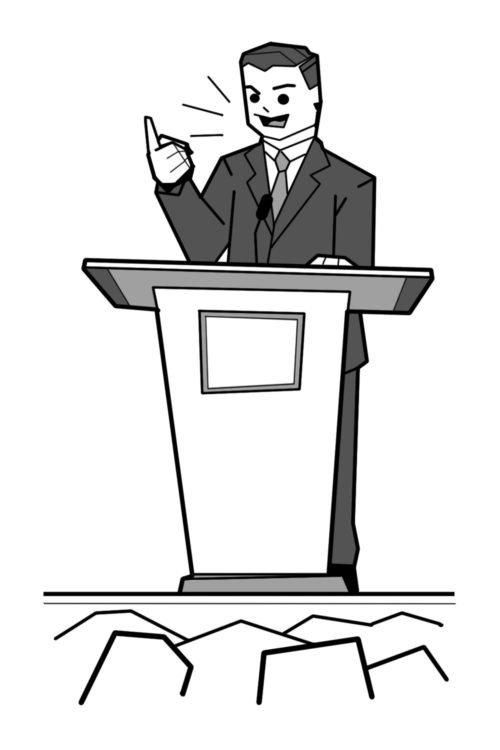Canadian campuses are seeing an alarming rise in right-wing populism according to Steven Zhou, a Toronto-based journalist.
Zhou was prompted to make the claim in a CBC opinion piece after a number of posters and flyers with “outright racist messages” were circulated on campuses across the country, including McGill University, the University of Toronto, the University of Alberta, McMaster University, and others.
In September 2016, posters circulated at the University of Alberta (U of A) that read, “Fuck Your Turban.” In 2015, a “White Students Union” advertisement was also found on several campuses in the Greater Toronto Area (GTA).
Zhou said in his article that this is a result of the emboldening populist wave started by the newly elected President of the United States, Donald Trump.
In an interview, Zhou referred to the Jan. 29 Quebec mosque shooting as a sign that “Canada is not immune” to far-right ideology.
Jennifer Evans, a Carleton University history professor, said extreme right ideas have always had a presence on university campuses.
“I don’t think it was ever not a part of the landscape,” Evans said.
Zhou and Evans both said university campuses are a place for free exchange of ideas and informed, responsible dialogue based around informed analysis of literature. But Zhou said this idea can be exploited to cultivate movements such as right-wing populism and the alt-right.
Jacob Allin, a third-year Carleton political science student and member of the Carleton Conservatives, said right-wing populism has not increased at Carleton from his experience.
“I believe there are people on campus who believe in right-wing populism, just as there are those who believe in left-wing populism. Although this number is likely to be comparatively smaller,” he said.
Allin said those espousing left-wing views often incorrectly mix conservatism with right-wing populism.
“I would say that even conservative views have been looked down upon by the university administration, faculty, and student population,” Allin said. “I think on campus there is still a general fear for those on the right to publicly and openly express their right-wing views for fear of being attacked.”
But Evans said it’s important to look at the form right-wing populism has taken. She said it can take a racially charged form, with the idea that migration endangers and undermines traditional ethno-cultural values.
“It also often proclaims the importance of traditional gender roles as buttressing the nuclear, heterosexual family, which populists feel is under threat from cosmopolitan, rights-based society,” Evans said.
She said social media has given people anonymity to share these views openly, and added that even before the digital age one might stumble upon anti-Semitic writing in a library book or on defaced posters.
“Just as social media has given populists a voice, so too has it provided opportunity to challenge these ideas in an open forum,” she said.
Evans runs a project called My Hate 2.0, which explores the way civil society uses digital media to formulate an opposition to the “radical right,” as she described it.
She said one does not need to think solely in terms of new media for evidence of how these ideas make their way to university campuses.
“Old technology—like the scrawling on bathroom walls—is a perfect example of a place where hateful ideas manifest,” Evans said.
Zhou said university administrations are often not equipped to deal with incidents such as the ones that occurred at the U of A and some universities in the GTA.
He said the gap between the administration and students doesn’t allow the administration to fully understand the situation.
University professors can examine these ideas carefully and thoroughly, based on an analysis of evidence, as intellectual, socio-cultural phenomena, according to Evans.
“There is a difference between an intellectual position and outright hate, and professors tackling charged subjects must ensure that the lecture hall remains a place of informed debate,” she said.






